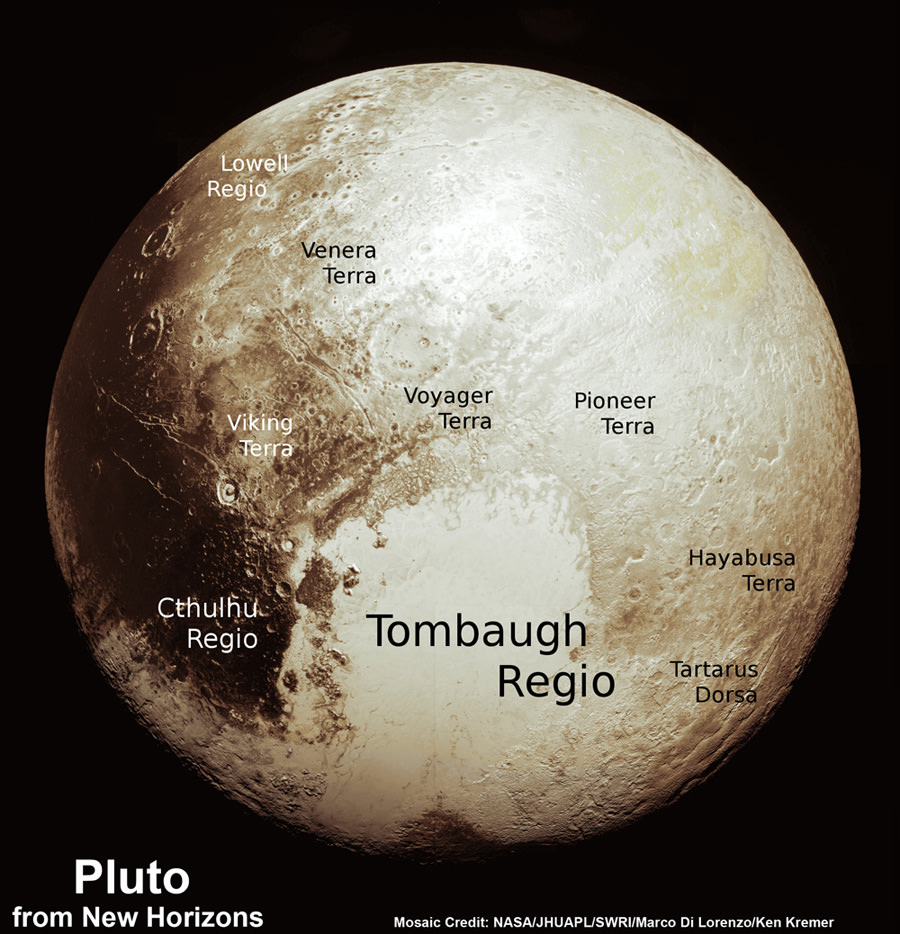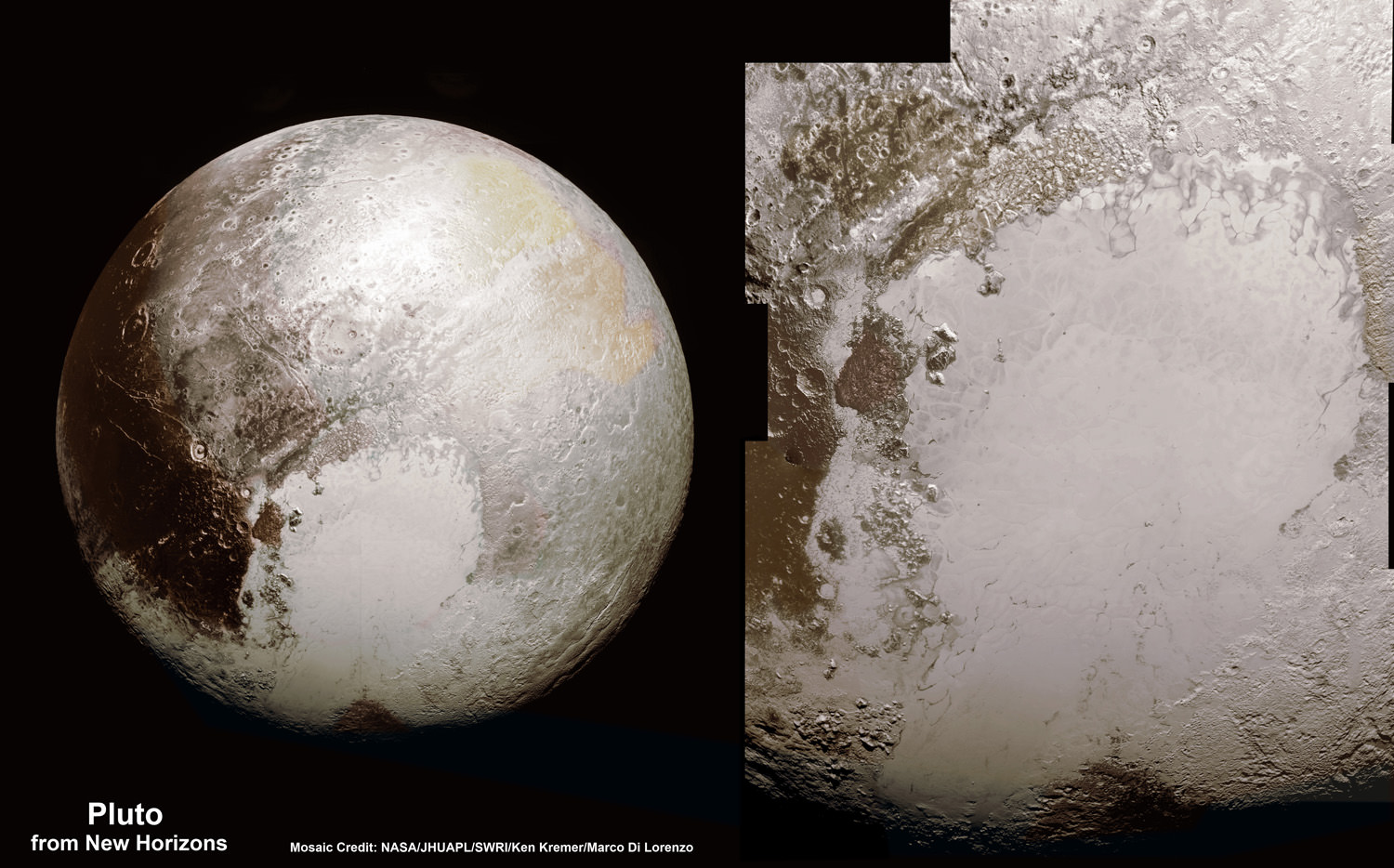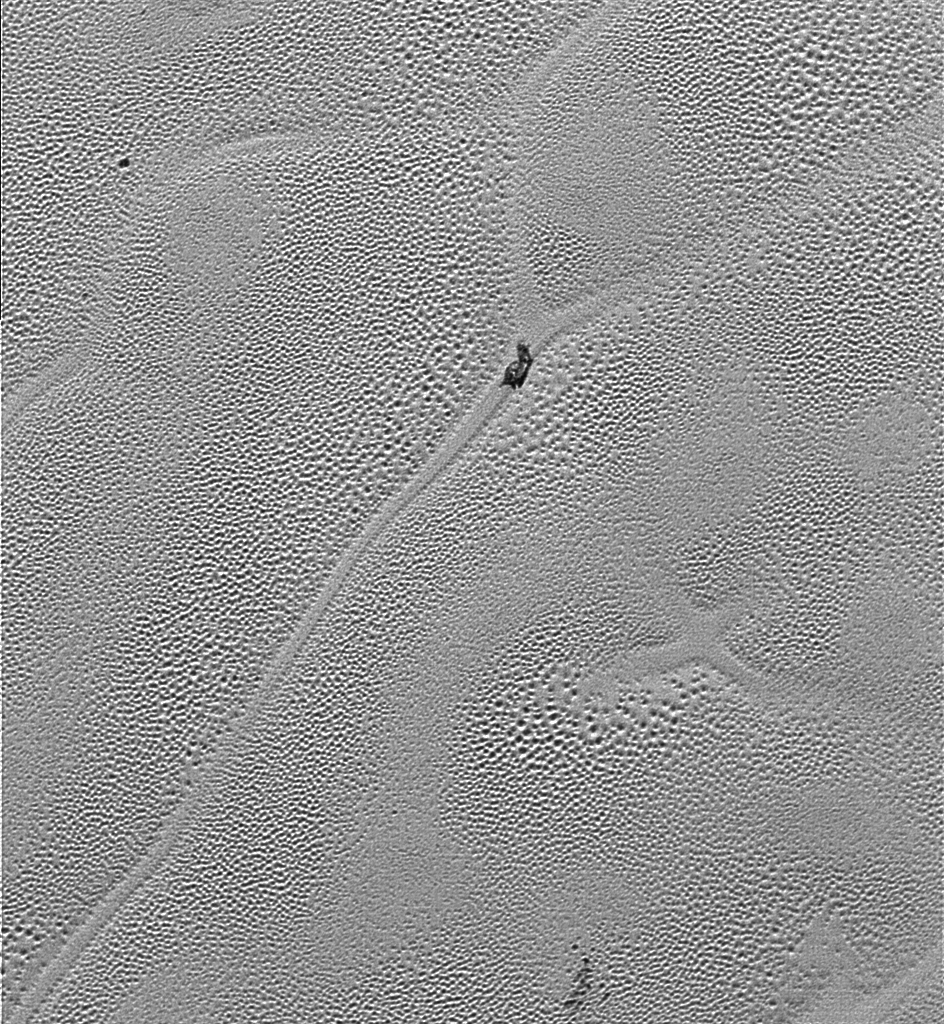“X” marks the spot that’s illustrative of “convective churning” resulting from subsurface planetary heating, as seen in a fascinating new super high resolution image received from NASA’s New Horizons spacecraft on Christmas Eve, Dec. 24, 2015. Its situated at the very center of the left ventricle of Pluto’s huge “heart” – an icy flow plain that’s informally named “Sputnik Planum.”
The “X” feature – see image above – is located in an area of intersecting cells, shaped like polygons, on the plains of “Sputnik Planum” which are mostly comprised of frozen nitrogen ices.
So what’s really piqued the interest of scientists leading the New Horizons mission, is that the “X” feature is a residue of “convective churning” or internal heating and it has changed over time.
Indeed the “X” is found at what appears to be the melted remnants of a quadruple junction of the polygonal or cellular patterns, that dominate Sputnik Planum. And it’s not tiny!
“This part of Pluto is acting like a lava lamp,” said William McKinnon, deputy lead of the New Horizons Geology, Geophysics and Imaging team, from Washington University in St. Louis, “if you can imagine a lava lamp as wide as, and even deeper than, the Hudson Bay.”

The polygonal cell features are believed to have arisen over time from the slow thermal convection of the icy plains that are composed of a slushy mixture of mostly nitrogen ices along with some water ice mixed in.
The image was taken by the probes telescopic Long Range Reconnaissance Imager (LORRI) at a distance of approximately 10,000 miles (17,000 kilometers), about 15 minutes before New Horizons’ closest approach to Pluto.
Scientists currently interpret the dark patch near the top of the image to be a dirty water “iceberg” that’s “floating in denser solid nitrogen, and which has been dragged to the edge of a convection cell.” Also visible are thousands of surface pits arising from sublimation.
New Horizons made history when it became Earth’s first emissary to hurtle past the small planet on July 14, 2015.
Pluto – also now known as the ‘Other Red Planet’ – was the last unexplored planet in our solar system.
The LORRI image nearly completes a mosaic of New Horizons’ highest-resolution images taken of Pluto along a swath at the center of Sputnik Planum. They have a resolution of about 250-280 feet (77-85 meters) per pixel – “revealing features smaller than half a city block on Pluto’s surface,” according to the team in a NASA statement.
The newly released images, from NASA and the New Horizons team, illustrate the polygonal or cellular pattern of the plains, which “are thought to result from the convective churning of a deep layer of solid, but mobile, nitrogen ice.”
The LORRI images also reveal numerous, active triple junctions spread across the terrain.
Based on the data returned thus far, researcher say “the pattern of the cells stems from the slow thermal convection of the nitrogen-dominated ices that fill Sputnik Planum.”
“Computer models by the New Horizons team show that these blobs of overturning solid nitrogen can slowly evolve and merge over millions of years.”
The nitrogen ices rise and sink over time forming ridges along the edges of the polygonal cells that change with time due to the subsurface heating.
The polygons range in width from to 25 miles (16 to 40 kilometers). They are somewhat dome-like and rise slightly about 100 yards (100 meters) in the center.
Researchers say Sputnik Planum itself is likely several miles or kilometers deep in some places and the icy plains are a few miles lower that the surrounding areas on Pluto.
“The solid nitrogen is warmed at depth by Pluto’s modest internal heat, becomes buoyant and rises up in great blobs, and then cools off and sinks again to renew the cycle.”

The “Sputnik Planum” region dominates the left side of Pluto’s “heart-shape” feature informally dubbed “Tombaugh Regio.”
So far New Horizon has transmitted back only about 20 percent of the data gathered, according to mission Principal Investigator Alan Stern of the Southwest Research Institute, Boulder, Colorado.
“It’s hard to imagine how rapidly our view of Pluto and its moons are evolving as new data stream in each week. As the discoveries pour in from those data, Pluto is becoming a star of the solar system,” says Stern.
“Moreover, I’d wager that for most planetary scientists, any one or two of our latest major findings on one world would be considered astounding. To have them all is simply incredible.”
The piano shaped probe gathered about 50 gigabits of data as it hurtled past Pluto, its largest moon Charon and four smaller moons.
Stern says it will take about a year for all the data to get back. Thus bountiful new discoveries are on tap for a long time to come.

During New Horizons flyby on July 14, 2015, it discovered that Pluto is the biggest object in the outer solar system and thus the ‘King of the Kuiper Belt.”
The Kuiper Belt comprises the third and outermost region of worlds in our solar system.
New Horizons remains on target to fly by a second Kuiper Belt Object (KBO) on Jan. 1, 2019 – tentatively named PT1, for Potential Target 1. It is much smaller than Pluto and was recently selected based on images taken by NASA’s Hubble Space Telescope.
Stay tuned here for Ken’s continuing Earth and planetary science and human spaceflight news.


I can understand “X” marking the spot of material “boiling” up from under the nitrogen ice, but that black “spot”? Dirty water iceberg? It sure looks like a drilling rig to me!
Dirty water iceberg? I think it looks like a drilling rig!
I am getting a “Duplicate comment detected” error with only one comment submitted. What’s with that?
You can’t fool me.. that dark feature isn’t a water ice extrusion.. That’s an ice slug traveling slowly along an ancient migration route.
It seems like it was done by ALIENS.the ‘black spot’ is the dust of aliens.’x’ marks are the travelling road of aliens-i’m 1000000000000000000000000000% SURE.
I say it is convective since we say the first pictures but nobody cared!
Of course, since I’m not scientist (just a huge science enthousiast) and have no paper to publish about it it doesn’t care.
Now, what caused that? Why isn’t all Pluto completely covered that way? Why does it look so recent? What kind of phenomenon could have produced it in the last billions years?
My idea on this : the capture of Charon.
Like Earth, Pluto rotated on itself much quicker when Charon got caught and it first revolved much closer to Pluto. Tidal effect was sufficient to heat up and melt some part and material of the interior of Pluto. Since Pluto’s rotation was rapidly slowing down to be tidally locked, the position of Charon had somekind of effect to make it errupt on and hemisphere more than the other.